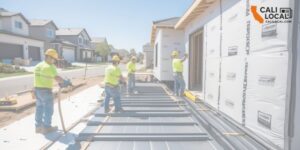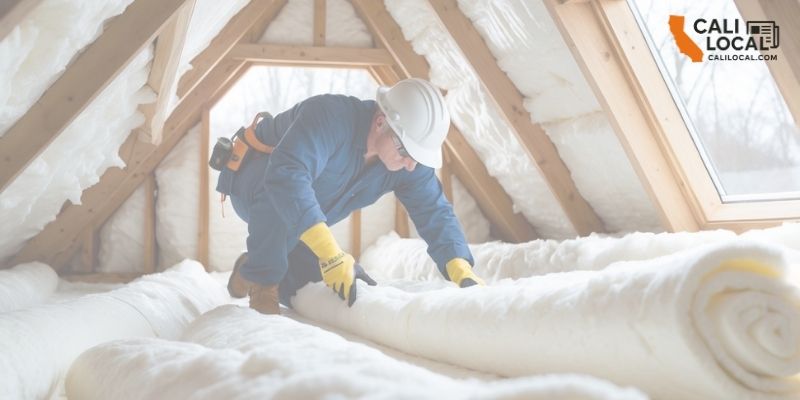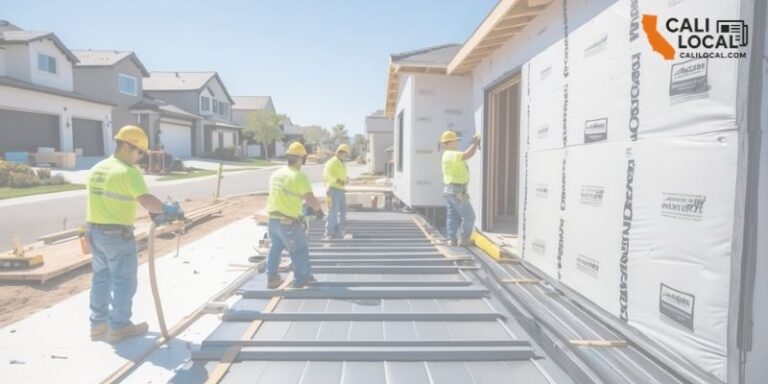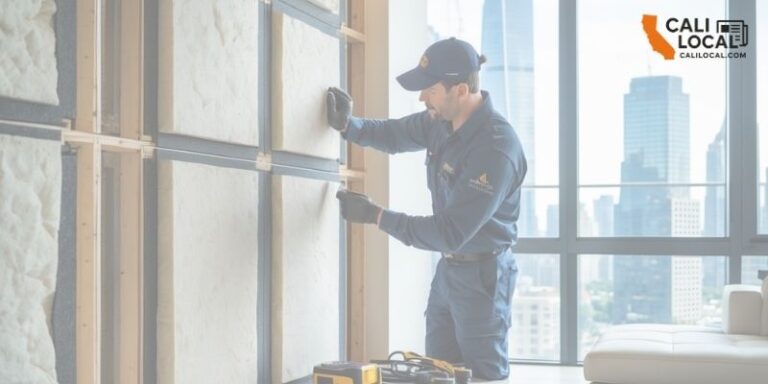Armour Camarillo Insulation has introduced a new fire-resistant attic insulation designed to enhance home safety. This insulation helps slow the spread of fire, providing critical extra time for families to respond in emergencies. It also meets strict fire safety standards, making it a reliable choice for homeowners.
The insulation uses materials that resist ignition and reduce heat transfer, which lowers the risk of fire damage in the attic. Armour Camarillo Insulation combines this with their experience in various insulation types to offer effective protection without sacrificing energy efficiency.
This new fire-resistant attic insulation makes homes safer by reducing the chance of fire spreading quickly in the attic area. Homeowners interested in upgrading their insulation can benefit from this product to improve both safety and comfort.
Fire-Resistant Attic Insulation: Features and Benefits

Fire-resistant attic insulation combines safety with energy efficiency, comfort, and soundproofing. It uses materials that resist heat and flames, protects homes from fire hazards, and helps maintain better indoor air quality. This insulation also improves thermal resistance and reduces energy costs.
Understanding Fire Resistance in Insulation
Fire-resistant insulation is made from materials that do not easily catch fire or spread flames. Common materials include fiberglass and mineral wool, which are naturally non-combustible. These materials have high heat resistance and can withstand high temperatures without burning.
This type of insulation slows down fire spread, giving occupants more time to evacuate in an emergency. It also helps protect the structure of the home, especially in attic spaces where fires can start from electrical issues or heat buildup.
Importance of Fire Safety and Protection in Homes
Fire safety in homes starts with using the right insulation. Fire-resistant attic insulation reduces risks of flame ignition and prevents fires from spreading quickly. This protection is critical in attic areas near electrical wiring or heating equipment.
Proper insulation also meets fire safety building codes and standards. Using fire-resistant materials can lower potential insurance costs and increase home safety for families. Regular inspection and maintenance of insulation ensure it remains effective over time.
Energy Efficiency and Improved Home Comfort
Beyond fire safety, attic insulation improves energy efficiency by reducing heat loss in winter and heat gain in summer. Fire-resistant insulation has good thermal resistance (R-value), which helps maintain steady indoor temperatures.
This efficiency lowers heating and cooling costs. It also reduces strain on HVAC systems, extending their lifespan. Well-insulated attics contribute to consistent home comfort by preventing drafts and temperature swings throughout the year.
Impact on Indoor Air Quality and Soundproofing
Fire-resistant attic insulation can also improve indoor air quality. Materials like mineral wool and fiberglass resist mold and mildew growth. They do not release harmful chemicals or fibers that affect breathing.
In addition, this insulation provides soundproofing benefits. It absorbs noise from outside and between rooms, creating a quieter living space. This makes homes more comfortable and peaceful, especially in busy neighborhoods or near highways.
Insulation Materials and Installation Options from Armour Camarillo

Armour Camarillo offers several insulation materials designed to improve home safety and energy efficiency. Their options focus on fire resistance, durability, and reducing heat transfer. Installation services meet local building codes to ensure proper performance and safety.
Overview of Fire-Resistant Insulation Materials
Armour Camarillo provides insulation materials selected for fire resistance and thermal performance. These include fiberglass, cellulose treated with fire retardants, and mineral wool insulation.
Fiberglass is popular due to its low cost, good moisture resistance, and effective heat barrier. Cellulose is made from recycled paper, treated to resist flames, and offers good air sealing. Mineral wool insulation is naturally fire resistant, denser, and durable.
Each material helps control heat transfer and prevents the spread of flames inside attics. They meet safety standards and contribute to lowering energy bills by improving thermal insulation.
Comparing Fiberglass, Cellulose, and Mineral Wool Options
| Material | Fire Resistance | Moisture Resistance | R-Value per Inch | Durability | Installation Methods |
|---|---|---|---|---|---|
| Fiberglass | Moderate | High | 2.2 – 2.7 | Long-lasting | Batts, blown-in, spray foam |
| Cellulose | Treated, good | Moderate | 3.2 – 3.8 | Settling possible | Blown-in |
| Mineral Wool | Excellent (non-combustible) | Moderate | 3.0 – 3.3 | Highly durable | Batts, blown-in |
Fiberglass insulation, including batts and blown-in types, is widely used for its moisture resistance and ease of installation. Cellulose offers better air sealing but can settle over time, requiring proper installation techniques. Mineral wool is the best in fire resistance and durability, suitable for high-risk areas.
Installation Process and Meeting Building Codes
Armour Camarillo’s installation starts with a thorough attic inspection to assess current insulation and air leaks. Proper ventilation is ensured to prevent moisture buildup, which can reduce insulation effectiveness.
Installation methods vary by material. Fiberglass batts are cut to fit between roof joists, while blown-in insulation fills gaps for uniform coverage. Spray foam insulation is also used by Armour Camarillo to seal air leaks and add thermal resistance.
They follow local building codes, ensuring the right R-value for attic insulation depending on the home’s location. This secures safety, improves energy efficiency, and helps homeowners save on energy bills. Inspections and tests confirm proper installation and performance after work is complete.
- Armour Camarillo Insulation
- 3211 Mission Oaks Blvd, Camarillo, CA 93012, United States
- +18056789004
- https://armourcamarilloinsulation.com/
Frequently Asked Questions
Fire-resistant attic insulation improves safety by slowing flame spread and reducing heat transfer. Different materials vary in fire resistance, R-values, and health impacts when installed in homes. Understanding these differences helps homeowners choose better insulation for comfort and protection.
What are the safety benefits of fire-resistant attic insulation compared to traditional materials?
Fire-resistant insulation slows down the spread of fire and can withstand higher temperatures than traditional materials. It reduces the risk of rapid flame growth and helps protect structural elements longer during a fire.
How does the R-value of cellulose insulation compare with fiberglass options?
Cellulose insulation typically has an R-value around 3.2 to 3.8 per inch. Fiberglass usually ranges from 2.9 to 3.8 per inch. This means cellulose and fiberglass offer similar thermal resistance when properly installed.
At what temperature does standard insulation material become a fire hazard?
Standard insulation materials can become hazardous around 700°F (370°C) or higher. At these temperatures, some materials may ignite or degrade, increasing fire risk.
Can old newspaper insulation in houses pose a risk of fire?
Yes, old newspaper used as insulation is highly flammable and can increase fire risk. It lacks modern fire retardants and should be replaced or supplemented with safer alternatives.
Is it safe to breathe in cellulose insulation in a home environment?
Cellulose insulation is treated with fire retardants and is generally safe once installed. However, during installation, dust particles may cause irritation, so proper protective gear is recommended.
How do modern insulation materials prevent fire spread in residential buildings?
Modern insulation often includes fire-retardant chemicals that slow combustion. Materials like fiberglass and treated cellulose resist burning and help contain heat, limiting fire spread inside walls and attics.










